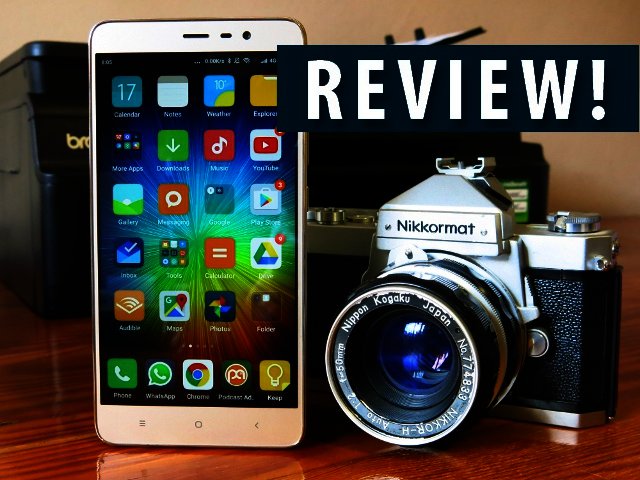R3 800 can't buy you a whole lot of phone in the midrange market these days, but Xiaomi has come up with a phablet that looks smart, performs well and offers excellent value for money. All for a sub R4k dent in your bank account. Here’s four things we liked, and a few we didn’t.
Good looks
Firstly, for that type of money one would expect a so-so looking smartphone, heavy with the plastic. My review unit was gold in colour, with a metallic finish and a chrome trim around the face of the device. The volume rocker and power button on the sides protrude just enough (a bit difficult to press when the phone is in a case), while there’s no bump for the back camera or fingerprint scanner. The 5.5” screen is well saturated and, as expected, features a Full HD resolution of 1080 x 1920 (294 ppi).
Great battery life
Xiaomi managed to optimise the 4000 mAh Li-Po battery really well, stretching battery life to rather impressive limits. If you can regulate your screen brightness should browse a lot, you can make this one last till way into the night. Even using it as a hotspot proved effective for a full work day, something other phones often struggle to do.
MIUI is tops
One thing I have grown to love about the Xiaomi phones, is the use of the MIUI user interface. It doesn’t bog you down with bloatware, it’s easy to come to grips with, plus if you have a free MI account in the cloud, it backs up 5 GB worth of your gallery, contacts, voice recordings and calendar events, amongst others. Let’s face it, 5 GB is not really a lot, and South Africans cannot upgrade that amount. Still, it’s currently my favourite Android UI to work with, plus it will also help you track your device if lost.
Price
R3 800 for a phablet is really not a lot. That said, you’re definitely not in for the same speed as the latest Galaxy Note, or the fast and pacy Mi5 (review), one of the best value for money flagships of the year. However, the Redmi Note 3 is far from slow, with the Qualcomm MSM8956 Snapdragon 650 (4 x 1.4 GHz Cortex-A53, 2 x 1.8 GHz Cortex-A72) performing amicably, scoring 75 341 in Antutu, just below the 77 579 of another upper midrange unit, the Sony Xperia X (priced at R12 000).
And the bad...
There are still a few bugs. Some of the processes, such as the podcast player, would stop in the background for no reason. There is also sometimes an abrupt lag between Chrome minimising and the home screen appearing, while the camera (16 MP, f2) also didn’t blow me away, especially indoors. It would also have been great to see Android 6 make an appearance on the phone, instead of Lollipop.
Like with most phones these days, you don’t really have the loudest speakers onboard, while the Redmi Note 3 unfortunately includes the speaker at the back of the unit, so when lying on a table, the sound is a bit muffled.
The final takeaway
If you are in the market for a larger phablet device, but not willing to pay the exorbitant amounts for the latest iPhone or Samsung version, the Xiaomi Redmi Note 3, priced at a rather unbelievable R3 800, will serve you well. Good looks, strong battery, solid upper midrange performance, and a great UI, make this one of the best selections of the year.





